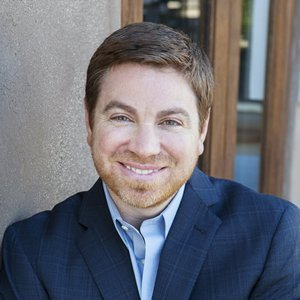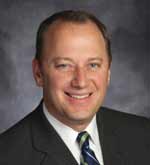The Extreme Heat Update briefing in California addressed the pressing issue of extreme heat and its long-term impact on the state. The event highlighted the need for building community resilience, especially in underserved and isolated areas.
The Situation with Extreme Heat:
The briefing began by acknowledging that while California may have experienced a temporary reprieve from extreme heat, experts warn that it is a persistent issue. Extreme heat events are becoming more frequent, severe, and prolonged due to climate change. It’s crucial to recognize that heat-related health impacts are not limited to headline-catching days but occur throughout the summer and even into other seasons.
Building Public Awareness:
One of the central questions raised in the briefing is how to effectively raise public awareness about the dangers of extreme heat in underserved and isolated communities. This is a critical aspect of mitigating the adverse effects of extreme heat. It is emphasized that the focus should extend beyond record-breaking heat days to encompass the entire summer and other seasons.
Success Stories in Building Resilience:
The briefing showcased success stories from community-based organizations in San Joaquin, Ventura, and Butte counties, as well as initiatives focused on people with disabilities. These organizations have been working on building resilience in their respective communities and have valuable insights to share about their experiences. Several speakers were featured in the briefing including:
- Braden Kay, Extreme Heat and Community Resilience Program Manager, Governor’s Office of Planning and Research: Mr. Kay provided an overview of the state’s efforts in building resilience, particularly in underserved communities. He mentioned the allocation of $118 million in grants to support initiatives related to extreme heat.
- Dr. Maggie Park, County Public Health Officer, San Joaquin County Public Health Services: Dr. Park offered a public health perspective on how San Joaquin County is dealing with extreme heat and its impact on the community.
- Dr. Inés Ruiz-Huston, VP, Special Programs & Civic Engagement, El Concilio: Dr. Ruiz-Huston represents El Concilio, an organization working on community resilience. She shared insights into their efforts and successes in raising awareness and preparing communities for extreme heat.
- Susan Henderson, Executive Director, Disability Rights Education and Defense Fund: Ms. Henderson represents an organization focused on the unique challenges faced by people with disabilities during extreme heat events. Her contributions shed light on the importance of inclusivity in resilience-building efforts.
- Patrizia Hironimus, Executive Director, Butte Environmental Council
Key Achievements and Challenges:
The briefing highlighted that California had made meaningful progress in preparing for extreme heat, thanks in part to the Heat Ready California program. Over 120 community-based organizations have become funded partners, and extensive advertising and outreach campaigns have increased awareness about staying safe in extreme heat. Efforts have targeted vulnerable populations and have been conducted in multiple languages to ensure accessibility.
Challenges for the future include the need for continued awareness, outreach, and preparedness as extreme heat events become more common. The briefing stresses the importance of community connections and ensuring that information is disseminated through trusted messengers.
In conclusion, the Extreme Heat Update briefing in California served as a platform to share valuable insights, success stories, and challenges related to building community resilience in the face of ongoing extreme heat events. It emphasized the importance of proactive measures, inclusivity, and public awareness in addressing this critical issue.
Dr. Maggie Park, the County Public Health Officer of San Joaquin County Public Health Services, provided a crucial perspective on the impact of extreme heat on public health and community well-being:
San Joaquin County Profile:
Dr. Park described San Joaquin County as a mix of urban and rural areas with a population of around 750,000 people. She highlights the county’s diversity, with Stockton being recognized as the most racially diverse city in America. However, she also notes that 14.5% of the county’s residents live in poverty.
Public Health Preparedness:
As summertime approaches each year, San Joaquin County’s public health department focuses on releasing safety messages, including advice on staying safe in extreme heat. These messages emphasize the dangers of heat-related illnesses and the importance of prevention.
Record-Breaking Heat:
Dr. Park mentioned that the Central Valley, including San Joaquin County, is already known for its hot climate. However, the region experienced record-breaking temperatures, with Stockton reaching a high of 115 degrees. This extreme heat garnered significant public attention.
Importance of Clear Messaging:
Dr. Park underscored the importance of clear and consistent messaging. During the COVID-19 pandemic, advice was to stay indoors, while during extreme heat events, it was essential to promote staying cool, which required distinct communication strategies.
Heat Impact on Health Equity:
Dr. Park emphasized that low-income neighborhoods and communities with higher Black, Hispanic, and Asian populations experience significantly more urban heat than wealthier and predominantly white neighborhoods. This highlights the importance of addressing health equity issues related to extreme heat.
Community-Based Outreach:
The public health department partners with community-based organizations, such as El Concilio, to reach vulnerable populations and provide education and resources in areas most affected by extreme heat.
Challenges for Vulnerable Populations:
Dr. Park acknowledged the unique challenges faced by homeless populations during heatwaves. To address this, the county offers practical support and education on food storage, hydration, and other safety measures.
Transportation and Accessibility:
Efforts are made to ensure accessibility to cooling centers, including providing free transportation through the local bus system and accommodating service animals and personal pets.
Language Barriers:
In a region with diverse populations, language barriers can be a significant challenge. Dr. Park mentioned the need to provide materials and education in indigenous languages to reach all communities effectively.
Future Initiatives:
San Joaquin County is taking proactive steps to address heat-related challenges in the future. This includes programs focused on installing air conditioning with backup generators for vulnerable residents and initiatives to increase urban green spaces and create shaded areas.
Data Collection and Surveillance:
Dr. Park expressed the hope that improved data collection, including syndrome surveillance, will provide more accurate information about heat-related health impacts, allowing for better-informed community responses.
In summary, Dr. Maggie Park’s perspective as a public health officer shed light on the challenges and initiatives undertaken in San Joaquin County to address extreme heat and its health impacts. Her insights underscore the importance of clear communication, community partnerships, and proactive measures in protecting vulnerable populations from extreme heat events.
Dr. Inés Ruiz-Huston, VP of Special Programs & Civic Engagement at El Concilio, a passionate advocate for community engagement and resilience in the face of extreme heat presentation emphasized the importance of collaboration between public communities and public health organizations to ensure the well-being of vulnerable populations.
One key point she highlighted was the need for effective messaging in multiple languages, recognizing that diverse communities require tailored information to stay safe during extreme heat events. She stressed that door-to-door communication remains one of the most effective ways to reach and educate these communities.
Dr. Ruiz-Huston also emphasized the role of special events and community engagement in disseminating important information. She suggested that making the topic of extreme heat exciting and engaging can be more effective than merely providing information. Hosting events and parties can be a way to educate the community while making it enjoyable.
One successful strategy she mentioned was creating videos in partnership with public health organizations. These videos were shared through social media platforms, helping residents understand how to stay safe during extreme heat events. Additionally, they leveraged free transportation provided by the local public transit system to cooling centers, which garnered significant attention and engagement from the community.
Recognizing the challenges faced by families who go to work early in the morning and may miss important morning news, they utilized social media platforms and videos to disseminate crucial information. These efforts ensured that the heads of households, often seen as trusted messengers, could share vital information with their families.
Dr. Ruiz-Huston also touched on concerns within the community, such as the cost of electricity during heatwaves. Many families were afraid to run their air conditioning units due to the fear of high electricity bills. To address this, they worked on identifying social programs and resources that could help families become more energy-efficient, such as connecting them to solar panels or energy-saving initiatives.
In conclusion, Dr. Inés Ruiz-Huston emphasized the importance of finding trusted community representatives or “talkers” who can effectively communicate with neighborhoods. By identifying these individuals and providing them with information and resources, the community can better prepare for extreme heat events and collectively take care of one another. She highlighted the need to address concerns related to energy costs and to promote energy-efficient solutions for vulnerable populations.
Susan Henderson, the Executive Director of the Disability Rights Education and Defense Fund (DREDF), discussed the impact of extreme heat on people with disabilities.
She described DREDF as a national nonprofit law and policy center led by people with disabilities and parents of children with disabilities. Their mission is to advance and protect the civil and human rights of disabled individuals.
Disability Statistics: Susan mentions that the Centers for Disease Control estimates that approximately one in four people in the US have some form of disability, with a significant portion being older individuals. She highlights that disabilities can be both invisible and dynamic.
Common Challenges for Disabled People in Extreme Heat:
Accessible Housing: Susan emphasized the importance of safe, accessible housing with air conditioning, as housing infrastructure and accessibility are critical for the well-being of disabled individuals during extreme heat.
Accessible Transportation: Accessible transportation is crucial for disabled individuals to reach cooling centers or healthcare facilities during extreme heat. This includes ensuring that mobility devices can be accommodated.
Accessible Cooling Centers: Susan points out that making cooling centers accessible can be challenging, and it’s vital to address this issue.
Power Outages: Many disabled individuals rely on electricity for medical devices and air conditioning. Power outages during extreme heat can have life-threatening consequences.
Collaboration with OCPSC: Susan mentions that DREDF worked with the Office of Community Partnerships and Strategic Communications (OCPSC) at the state and local agency levels to ensure that planning and communication included disabled people. They acted as trusted messengers to reach out to people and included interpreters for languages other than English.
Focus Groups: DREDF conducted focus groups with disabled individuals to understand their unique needs during extreme heat events. These focus groups shed light on various challenges faced by disabled people, including housing issues, transportation challenges, and concerns about representation and undercounting.
Accessible Cooling Centers Guide: DREDF collaborated with the California Office of Emergency Services to create an accessible cooling centers guide. The guide emphasizes the importance of collaboration with community resources and organizations that serve disabled individuals.
Recommendations for Improvement:
Accessibility Audit of Cooling Centers: Susan suggested conducting accessibility audits of cooling centers using a thorough checklist to ensure they are accessible to disabled individuals.
Accessible Transportation: Ensure that free transportation provided during extreme heat is accessible to individuals with mobility devices.
Staff Training: Train cooling center staff and volunteers to assist disabled individuals and respond to requests for reasonable accommodations.
#CaliforniaHeat #CommunityResilience #ClimateAdaptation #PublicHealth #ExtremeHeatAwareness #HeatSafety #ClimateChangeAction #InclusiveMessaging #VulnerableCommunities #DisabilityRights #EmergencyPreparedness #HeatwaveImpact #SustainableSolutions #ClimateResilience #CommunityOutreach #HeatMitigation #PublicAwareness #DisasterPreparedness #ClimateActionNow #EnvironmentalJustice #HeatEmergency #ClimateJustice #HeatWaveResponse #HealthyCommunities #ClimateActionPlan










